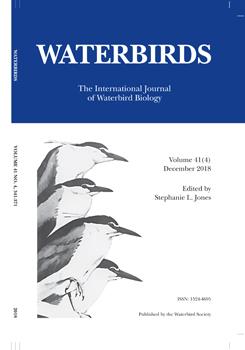The influence of an unusual concentration of sea ice and breeding failure on the foraging movement patterns and habitat use of Great Black-backed Gulls (Larus marinus) was investigated. GPS loggers were deployed on three incubating females when multi-year sea ice moved into foraging ranges, dividing the tracking period (1–23 June 2017) into ice-free (5–10 days) and ice-present periods (11–12 days). Foraging trip parameters (e.g., distance, duration) differed among individuals but not with ice conditions. Great Black-backed Gulls decreased use of islands when ice was present (0.05 ± 0.08 locations/trip) relative to absent (5.9 ± 0.5 locations/trip), but increased use of marine habitat when ice was present (9.4 ± 0.2 locations/trip) relative to absent (2.9 ± 0.2 locations/trip). Great Black-backed Gulls also moved at higher speeds in areas of 91–100% ice cover relative to < 50% ice cover, suggesting that low percent cover sea ice acts as important at-sea foraging/roosting sites. Additionally, two Great Black-backed Gulls that were continuously tracked during post-breeding failure repeatedly visited the colony throughout July-August, suggesting some advantage to maintaining a presence at nest sites.
How to translate text using browser tools
1 December 2018
Sea Ice Influences Habitat Type Use by Great Black-Backed Gulls (Larus marinus) in Coastal Newfoundland, Canada
Laurie D. Maynard,
Gail K. Davoren
ACCESS THE FULL ARTICLE

Waterbirds
Vol. 41 • No. 4
December 2018
Vol. 41 • No. 4
December 2018
anomalous ice conditions
breeding failure
foraging habitat
foraging movement
GPS tracking
Great Black-backed Gulls
Larus marinus




